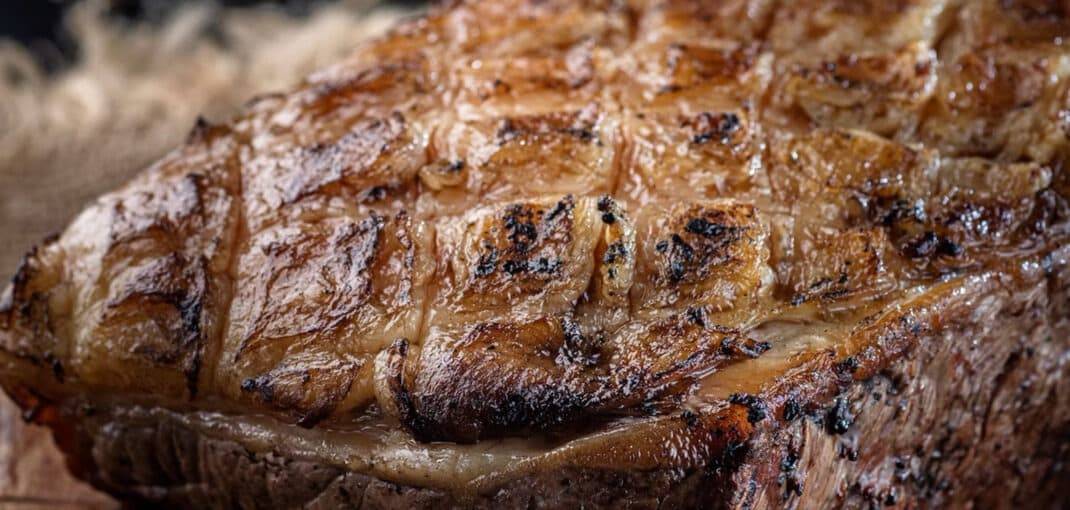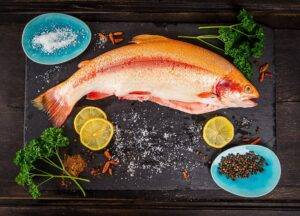Mastering the Rib Roast
When it comes to cooking a mouthwatering herbed standing rib roast, mastering the art is essential. This classic dish is perfect for special occasions or when you want to impress your guests with a flavorful centerpiece. In this section, we will guide you through the process of selecting the perfect cut from Frazie’s and preparing it with a delicious herb rub.
Once you have selected your Frazie’s rib roast, it’s time to prepare a flavorful herb rub. This step is where you can truly elevate the taste of your roast. By combining herbs and spices in just the right ratios, you can create a rub that enhances the natural flavors of the meat.
Choosing the Perfect Cut
When it comes to cooking a rib roast, selecting the right cut is essential for achieving the best results. Understanding the different cuts of rib roast available will help you make an informed decision based on your preferences.
Understanding the Different Cuts
There are several varieties of rib roast to choose from, each offering its own unique flavor and tenderness. The most common cuts include:
- Prime Rib: This is the most popular and widely available cut. It is known for its rich marbling, which contributes to its tender and juicy texture.
- Ribeye Roast: This cut comes from the same area as prime rib but is boneless. It offers excellent flavor and tenderness, making it a great choice for those who prefer boneless options.
- Standing Rib Roast: Also known as “standing prime rib,” this cut includes both meat and bones. It is often considered more flavorful due to the presence of bones during cooking.
Tips for Selecting the Best Rib Roast
Here are a few key factors to consider:
- Marbling and Fat Distribution: Look for a roast with abundant marbling throughout the meat. Marbling adds flavor and ensures a juicy result when cooked.
- Size: Consider how many people you will be serving and choose a size accordingly. A general rule of thumb is to estimate about ½ pound (225 grams) per person.
- Bone-In or Boneless: Decide whether you prefer a bone-in or boneless roast. While bone-in roasts tend to have more flavor, boneless options offer convenience when carving.
- Ask Your Butcher: Don’t hesitate to ask your butcher for recommendations and advice on selecting the best rib roast from Frazie’s. They can provide valuable insights based on their expertise.
By understanding the different cuts available and considering factors such as marbling, size, and bone-in or boneless options, you can confidently select the best rib roast for your culinary masterpiece.
Preparing with Flavorful Herbs
To elevate the flavor of your rib roast, preparing it with a flavorful herb rub or marinating it can make a significant difference. In this section, we will explore both techniques to help you achieve a mouthwatering result.
Creating an Herb Rub
An herb rub is a mixture of essential herbs and spices that adds depth and aroma to your rib roast. To create a flavorful rub:
- Discover Essential Herbs and Spices: Common herbs and spices used in rib roast rubs include rosemary, thyme, garlic powder, onion powder, salt, and black pepper. Experiment with different combinations to find your preferred flavors.
- Learn Proper Ratios and Combinations: The key to a well-balanced herb rub is using the right ratios of herbs and spices. Start with equal parts of each herb or spice and adjust according to your taste preferences.
- Tips for Applying the Herb Rub: Before applying the rub, ensure that your rib roast is dry by patting it with paper towels. Massage the herb rub onto all sides of the meat, ensuring even coverage for maximum flavor infusion.
Marinating for Enhanced Flavor
Marinating is another technique that can enhance the flavor and tenderness of your rib roast. Consider the following tips when marinating:
- Understand the Benefits of Marinating: Marinating helps tenderize the meat while infusing it with additional flavors. It can also add moisture to prevent drying during cooking.
- Explore Different Marinating Techniques: There are two primary marinating techniques: wet marinades and dry brines. Wet marinades use liquid ingredients like vinegar or citrus juices, while dry brines involve rubbing salt directly onto the meat.
- Enhance Taste and Tenderness with Marinades: Experiment with different marinade ingredients such as soy sauce, Worcestershire sauce, olive oil, herbs, and spices. Allow the rib roast to marinate for several hours or overnight in the refrigerator for optimal results.
By creating a flavorful herb rub or marinating your rib roast, you can infuse it with delicious flavors that will impress your guests and elevate your culinary experience.
Cooking Techniques for Tender Results
To achieve a tender and juicy rib roast, it’s important to use the right cooking techniques. In this section, we will explore the benefits of slow roasting and the importance of resting and carving the roast properly.
Slow Roasting for Juicy Perfection
Slow roasting is a preferred method for cooking rib roast as it allows the meat to cook evenly while retaining its natural juices. Here are some key points to consider:
- Benefits of Slow Roasting: Slow roasting at a lower temperature helps break down the connective tissues in the meat, resulting in a more tender and flavorful roast. It also reduces the risk of overcooking and drying out the meat.
- Ideal Cooking Times and Temperatures: For medium-rare doneness, a general guideline is to cook the rib roast at 325°F (163°C) for about 15-20 minutes per pound (450 grams). However, it’s essential to use an instant-read thermometer to ensure your desired level of doneness.
- Tips for Achieving a Tender and Juicy Roast: To enhance tenderness, start cooking your rib roast with the fat side up. This allows the fat to baste the meat as it melts during cooking. Additionally, using a roasting rack can help promote even airflow around the roast.
Resting and Carving the Roast
Resting and carving are crucial steps that should not be overlooked when preparing your rib roast:
- Importance of Resting: After removing your rib roast from the oven, let it rest on a cutting board or serving platter for about 15-20 minutes before carving. Resting allows the juices to redistribute throughout the meat, resulting in a more succulent final product.
- Proper Carving Techniques: To achieve beautiful presentation and even slices, carve against the grain of the meat. Start by cutting between the bones if you have a bone-in roast, or slice across the grain for boneless roasts. Use a sharp carving knife for clean cuts.
- Tips for Serving at the Perfect Temperature: Serve your rib roast when it is still warm but not piping hot. This allows the flavors to develop and ensures an enjoyable dining experience. Consider using a meat thermometer to check that the internal temperature reaches your desired level of doneness.
By employing these cooking techniques, including slow roasting and proper resting and carving methods, you can achieve a tender and juicy rib roast that will impress your guests.
Complementing with
Accompaniments
To create a well-rounded dining experience, complement your rib roast with delicious side dishes and flavorful sauces. In this section, we will explore classic side dishes that pair well with rib roast and provide tips for creating delectable sauces and gravies.
Classic Side Dishes
When it comes to side dishes for rib roast, there are several classic options that can enhance the flavors of the main dish. Consider these traditional accompaniments:
- Creamy Mashed Potatoes: Creamy mashed potatoes are a timeless favorite that pairs perfectly with the richness of rib roast. Prepare them by boiling peeled potatoes until tender, then mash them with butter, milk or cream, salt, and pepper.
- Roasted Vegetables: Roasting vegetables brings out their natural sweetness and adds a delightful contrast to the savory rib roast. Try roasting carrots, Brussels sprouts, or asparagus tossed in olive oil, salt, and pepper until they are caramelized and tender.
- Yorkshire Pudding: Yorkshire pudding is a classic British side dish made from a simple batter of flour, eggs, milk, and salt. It has a light and airy texture that complements the richness of the rib roast.
Discovering the perfect balance of flavors between your chosen side dishes and the rib roast will elevate your dining experience to new heights.
Sauces and Gravies
Enhance the taste of your rib roast by serving it with flavorful sauces or gravies. Here are some options to consider:
- Red Wine Reduction: Create a rich red wine reduction by simmering red wine with shallots, garlic, beef broth, and herbs until it reduces into a thick sauce. This sauce adds depth of flavor to your rib roast.
- Savory Au Jus: Au jus is a simple yet delicious sauce made from the natural juices released during the cooking process. Simply strain the drippings from the rib roast, skim off excess fat, and season with salt and pepper.
- Delicious Gravies: Another option is to create a flavorful gravy using the pan drippings from the rib roast. Thicken the drippings with a roux made from butter and flour, then season to taste with salt, pepper, and herbs.
By pairing your rib roast with classic side dishes and complementing it with flavorful sauces or gravies, you can create a well-rounded meal that will impress your guests.
A Flavorful Culinary Journey
Embark on a flavorful culinary journey with Frazie’s herbed standing rib roast recipe. By following our expert tips and techniques, you can master the art of cooking a delectable rib roast that will impress your guests.
With Frazie’s premium ingredients and your newfound knowledge, you can create a tender and flavorful centerpiece for any special occasion. Explore different variations and seasonings to personalize your rib roast, making it truly unique to your taste.
From selecting the perfect cut of rib roast to preparing it with a flavorful herb rub, slow roasting it to perfection, and complementing it with delicious side dishes and sauces, every step of the process contributes to an unforgettable dining experience.
So gather your ingredients, sharpen your knives, and get ready for a culinary adventure. With our cooking tips for rib roast and Frazie’s exceptional quality, you’ll be well on your way to creating a memorable meal that will leave everyone wanting more.
The Best Place for Fresh Seafood in Atlanta
Atlanta, often celebrated for its Southern cuisine and vibrant food...
Read MoreDiscover the Top 5 Organic Meats at Frazie’s
Discover the rise of sustainable meat in Atlanta and how...
Read MoreThe Rise of Sustainable Meat in Atlanta
Discover the rise of sustainable meat in Atlanta and how...
Read MoreMastering the Art of BBQ with Frazie’s Meat & Market
Introduction Barbecue is more than just a cooking method—it’s a...
Read More



